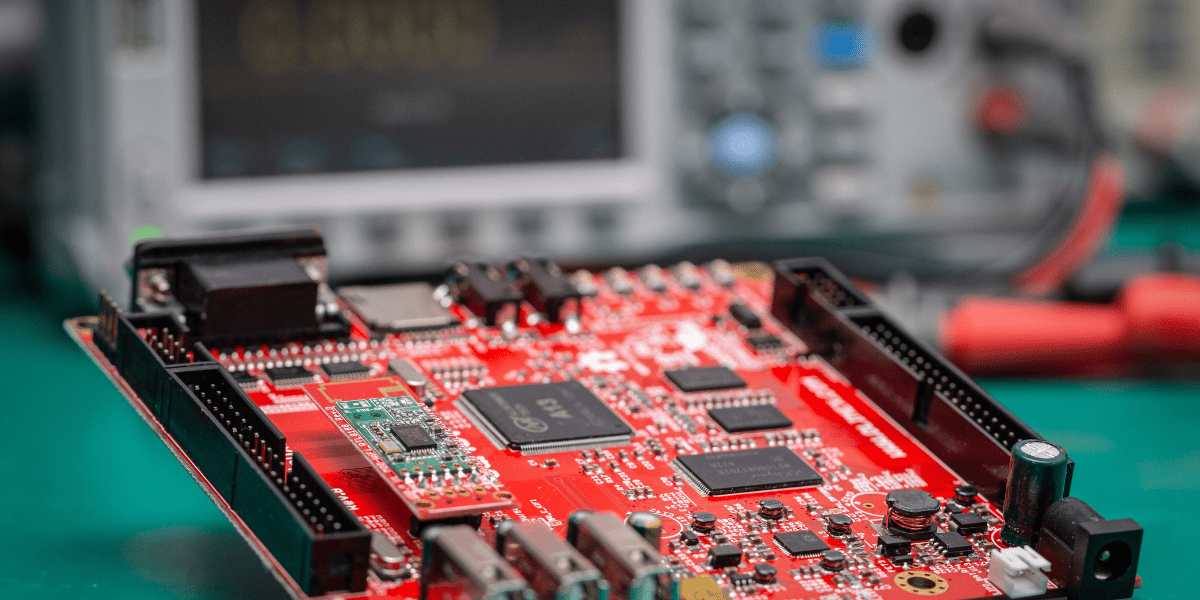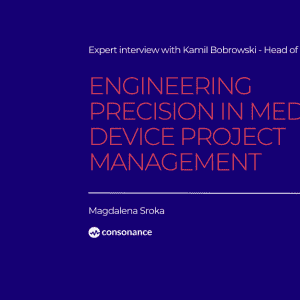Embedded Technology for MedTech wrap up from Embedded World 2023

It’s 2023, and the world of embedded technology has evolved rapidly, bringing new possibilities and challenges. So we went to Embedded World 2023 to find out what’s new to implement in MedTech projects delivered by Consonance Team. In this article, we will take a look at the latest trends, innovations, and advancements in the field of embedded technology: both hardware and software.
Table of Contents
Embedded Technology: AI, Security, and Automotive dominate the space
From smart homes to autonomous vehicles, embedded technology are revolutionizing the way we interact with technology. Join us on a journey to discover the exciting new developments that are shaping industries. The Embedded World 2023 fair was characterized by the prominence of AI, security, and automotive technologies. Throughout the event, there were numerous System on Modules (SoM) with ARM application cores present in various configurations. Additionally, RISC-V, a free ARM competitor, was also heavily featured at many booths.
The Rust programming language has also gained traction, with Espressif promoting it heavily and already offering solutions for writing GUIs in Rust. The company plans to develop an entire SDK based solely on Rust.
The Zynq7000 chip, which combines ARM application cores with FPGA, was also heavily featured. While expensive, it offers significant capabilities for the vision systems and AI.
One notable absence at the fair was EDA (electronic design automation) software for PCB design. Altium, which has always had a large booth in previous years, was notably absent.
Product highlights
To improve embedded technology performance STM revealed details about its new MCU families. The C series, which is composed of small 32-bit microcontrollers, aims to replace 8-bit MCUs in ST’s lineup. However, it is less energy-efficient than the 8-bit low energy family and more expensive, so the G series could be more adequate for battery powered applications. . The U series, intended for demanding and energy-efficient display applications, uses a new GPU and implements optimization for circular graphics. Additionally, 8-bit families will continue to be produced for another 10 years.
ST also announced support for VS Code for its MCUs. The company worked with Microsoft to provide the first effects of code development for STM32 in VS Code. It is still recommended to use Cube to generate the project structure, but now the import of the generated project is easier. Nevertheless, this is a welcome development for many developers.
Several companies also showcased medical chargers, universal enclosures, and membrane keyboards.
Finally, some products to look out for:
- Sensepeek’s PCB holders and probes – useful products for making measurements and prototyping,
- battery simulators – many companies unveiled new battery simulators, including Keysight (E36731A not yet introduced to the market),
- EMC pre-compliance equipment – Batronix showed the setup based on TekBox solutions (TEM Cell and shielding chamber), which can be used for pre-compliance EMC tests.
Embedded Technology development for MedTech
Improved Patient Outcomes
Embedded engineering enables the development of medical devices that are smaller, more efficient, and have greater functionality, which can lead to better patient outcomes. For example, implantable medical devices such as pacemakers and insulin pumps rely on embedded systems to regulate and monitor the patient’s health in real-time.
Advanced Diagnostics and Treatment
Embedded engineering can enable more accurate and personalized diagnosis and treatment plans. Wearable medical devices with embedded sensors can continuously monitor a patient’s vital signs and detect any changes that may indicate a potential health problem. Embedded systems can also enable targeted drug delivery, reducing the risk of side effects and improving treatment effectiveness.
Increased Efficiency and Cost Savings
Embedded systems can increase the efficiency of medical devices and reduce costs by enabling remote monitoring and maintenance. This means that patients can receive high-quality care without having to travel to a healthcare facility, and healthcare professionals can monitor multiple patients simultaneously, reducing the need for in-person visits.
Cutting-Edge Innovation
The medtech industry is continually evolving, and embedded engineering is at the forefront of this innovation. From smart prosthetics to artificial organs, embedded systems are driving the development of the next generation of medical devices, which have the potential to revolutionize healthcare.
In summary, embedded engineering is a critical component of modern medtech devices, and keeping up with the latest advancements in this field is essential for healthcare professionals, medical device manufacturers, and patients alike.
Medical device development ebook
Embedded technology do not tell the whole story about MedTech. This e-book, written by practitioners, shows how to stay focused on a product development and avoid diverting from core goals, especially when time to market is important. We only supply good techniques and expertise that may be relevant in completing a Medtech project. So obtain your free copy now!






